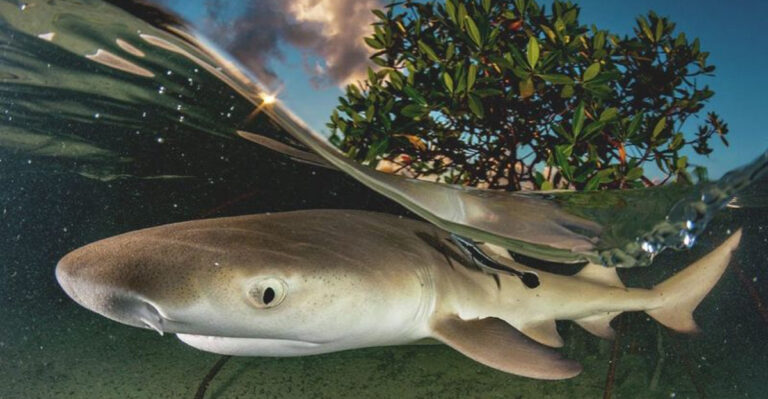Did You Know A 3,000-Pound ‘Heavy Rhinoceros’ Once Roamed South America
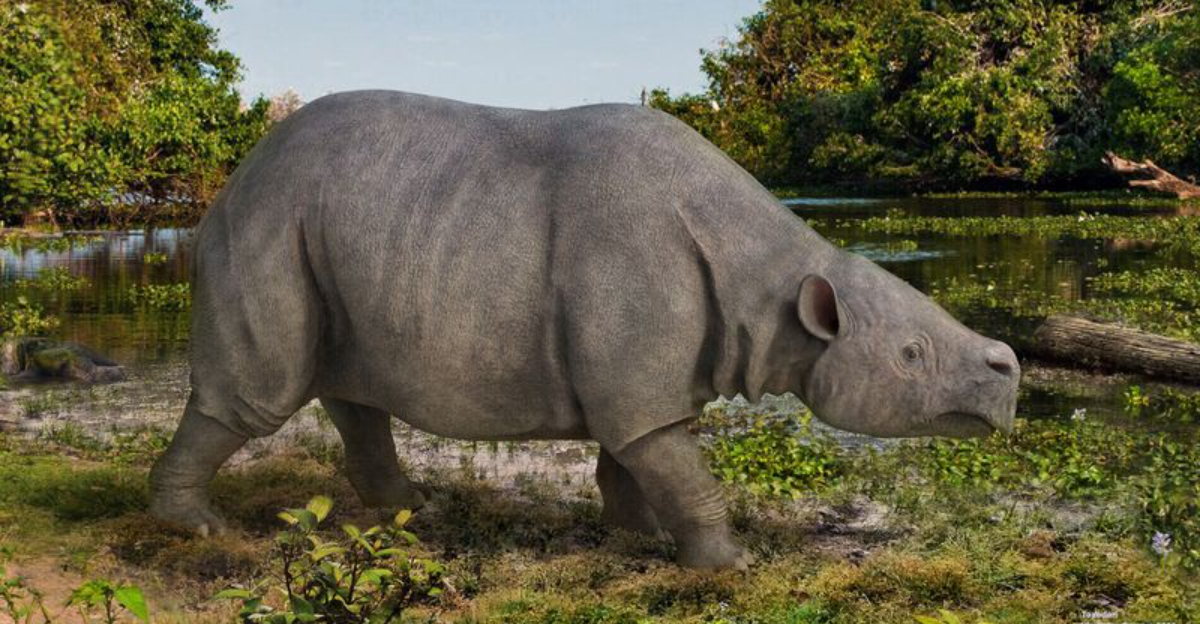
The Toxodon was an impressive prehistoric creature, often referred to as the ‘Heavy Rhinoceros’ of South America.
Weighing in at a hefty 3,000 pounds, this gigantic mammal roamed the earth thousands of years ago. Journey with us as we uncover ten fascinating facts about this incredible beast, which baffled scientists and sparked curiosity around the world.
1. The Mighty Toxodon
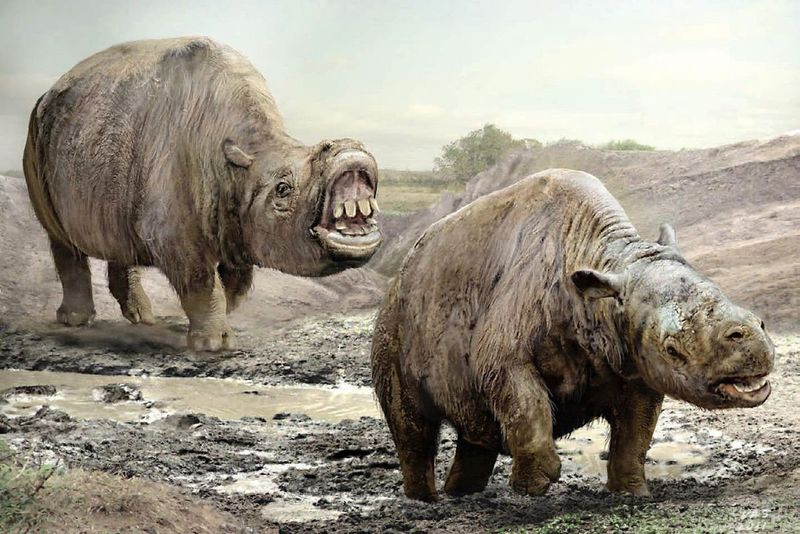
The Toxodon was a colossal mammal that roamed the regions of South America during the late Pleistocene epoch. With a weight around 3,000 pounds, it was comparable in size to modern-day rhinos. Its robust body featured short, sturdy legs, making it a formidable presence in its habitat.
Despite its size, the Toxodon had a relatively short neck, allowing it to graze easily on grasses and shrubs. Interestingly, its body structure suggests it could move swiftly, challenging the assumption that large equals slow. Fossils reveal that these creatures were abundant across South America, indicating they were well-adapted to their environment.
The Toxodon’s teeth were uniquely suited for grinding plant material, hinting at a herbivorous diet. This peculiar creature has intrigued paleontologists for years, providing insights into the diverse megafauna that once inhabited our planet.
2. Discovery In South America
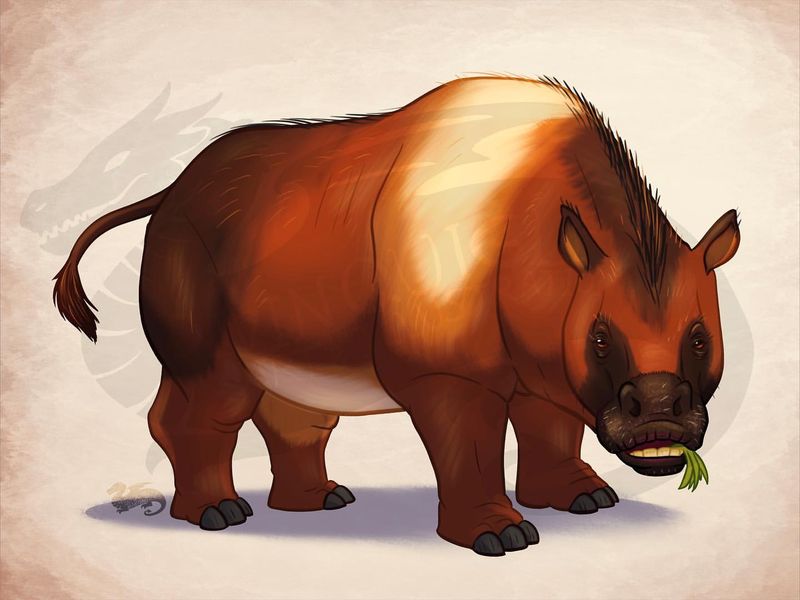
The discovery of Toxodon fossils in South America was a groundbreaking event for paleontology. These fossils were unearthed in various locations across the continent, with significant finds in Argentina and Brazil. The first Toxodon fossil was described by Darwin during his voyage on the HMS Beagle in the 1830s.
These discoveries have provided invaluable insights into the fauna of prehistoric South America. The fossilized remains offer clues about the Toxodon’s lifestyle, diet, and even its interactions with other species of the time. The Toxodon shares a connection with other extinct animals of the region, contributing to our understanding of the ancient ecosystems.
Paleontologists continue to study these fossils to unlock secrets of the past. Each new find helps paint a picture of the world the Toxodon inhabited, revealing patterns of evolution and extinction that shaped the history of life on Earth.
3. Anatomical Wonders
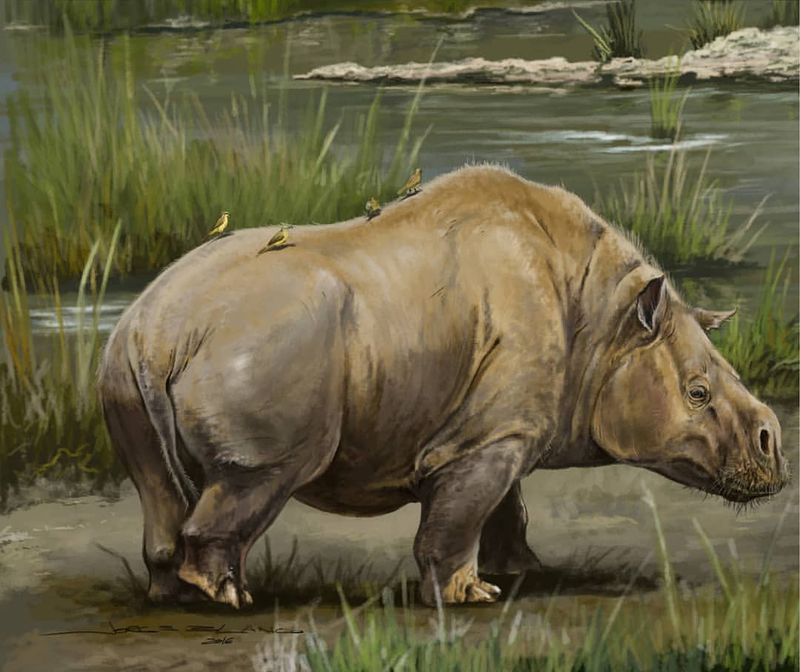
The anatomical structure of the Toxodon is a marvel of prehistoric evolution. Its skull was large and heavy, with a broad muzzle that supported its grazing lifestyle. The nostrils were positioned high on the head, possibly an adaptation for foraging in water-rich environments.
One of the most intriguing aspects of the Toxodon is its dental structure. It had continuously growing teeth, similar to rodents, which were perfectly adapted for grinding tough vegetation. This characteristic suggests a diet centered around fibrous plants, making it a master of the prehistoric food chain.
The Toxodon’s limbs were stocky and built for strength, not speed. However, its bones show adaptations for both terrestrial and semi-aquatic living, indicating a versatile lifestyle. This unique combination of traits made the Toxodon a successful inhabitant of its environment.
4. Relatives And Time Period
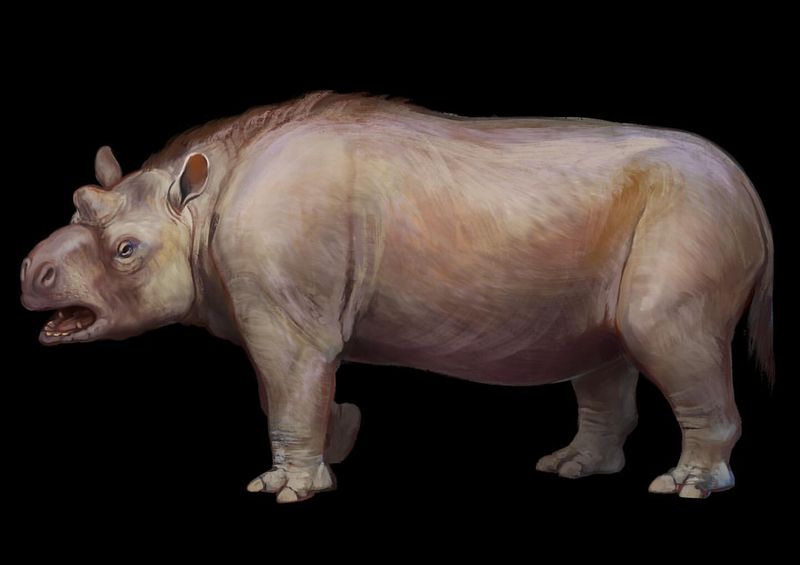
The Toxodon lived during the Pleistocene epoch, a time when giant mammals roamed the Earth. It shared its habitat with other colossal creatures, such as the giant sloth and saber-toothed tiger, painting a vivid picture of prehistoric South American life.
Despite its rhinoceros-like appearance, the Toxodon was more closely related to other extinct South American ungulates. Its lineage offers a glimpse into a unique branch of mammalian evolution, distinct from those found on other continents.
The extinction of the Toxodon, along with many of its contemporaries, occurred around 11,000 years ago. This period marked a significant shift in Earth’s biodiversity, possibly due to climate change and human influences. Studying the Toxodon’s relatives provides insights into the evolutionary pressures that shaped these magnificent creatures.
5. Diet And Feeding Habits
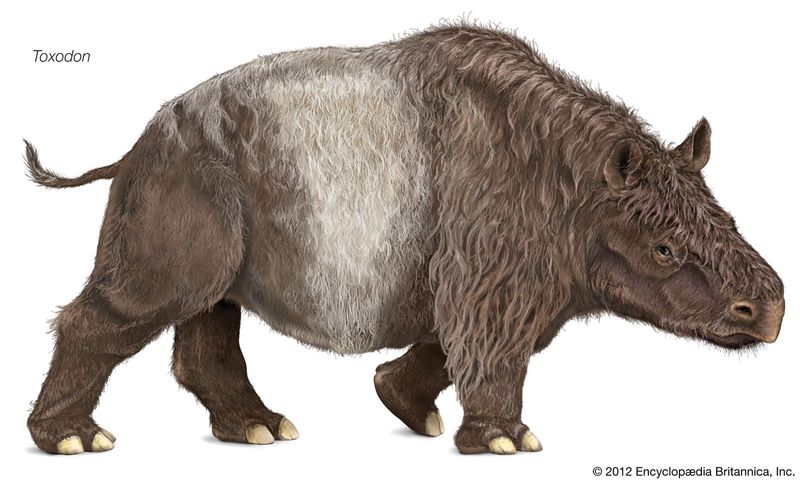
The Toxodon’s diet was primarily herbivorous, consisting of grasses, shrubs, and possibly aquatic plants. Its teeth were highly specialized for grinding tough plant material, continuously growing to compensate for the constant wear.
This adaptation allowed the Toxodon to efficiently process large amounts of fibrous food, sustaining its massive body. The structure of its jaw and teeth suggests it spent a significant portion of its time grazing, much like modern-day grazing animals.
The Toxodon’s feeding habits played a crucial role in its ecosystem, influencing the plant communities and interactions with other herbivores. Understanding its diet helps paleontologists reconstruct the ancient environments and the dynamics of prehistoric food webs.
6. Behavior And Social Structure
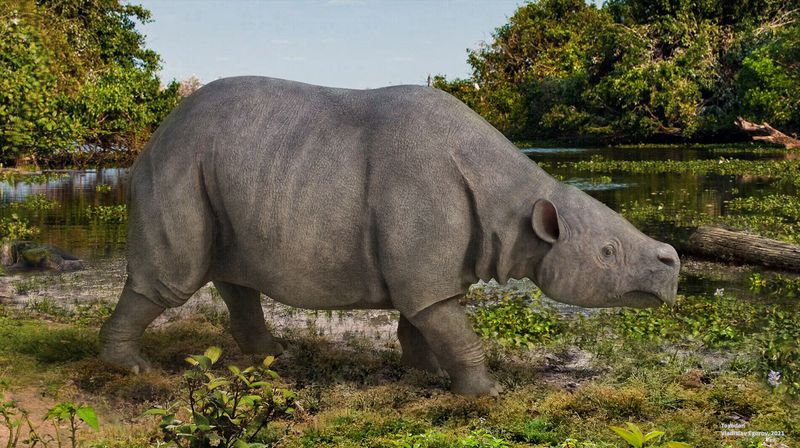
While much about the Toxodon’s behavior remains speculative, some fossil evidence suggests they might have lived in herds. This social structure could have provided protection against predators and facilitated better access to resources.
The herd behavior of Toxodons might have resembled that of modern-day large herbivores, like elephants or bison. Such social dynamics would have been crucial for survival in the diverse and sometimes harsh prehistoric environments.
Living in groups, Toxodons could share information about food sources and dangers, enhancing their adaptability. These potential social behaviors are a subject of ongoing research, as scientists uncover more about how these creatures interacted and thrived in their world.
7. Extinction Mysteries
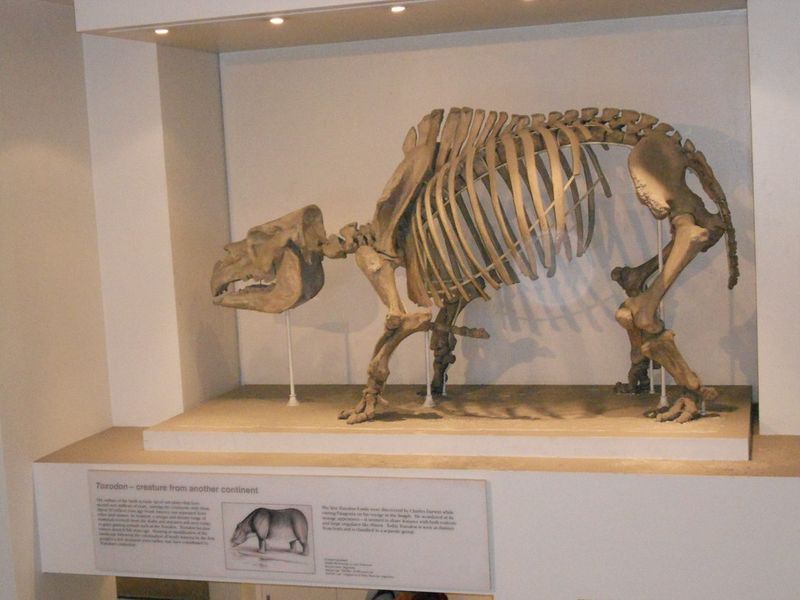
The extinction of the Toxodon is a mystery that continues to intrigue scientists. It vanished around the end of the Pleistocene epoch, a time coinciding with major changes in climate and human expansion.
Several theories attempt to explain the Toxodon’s disappearance, including climate shifts that altered its habitat and food sources, as well as overhunting by early humans. These factors, either alone or in combination, might have led to the decline of this once-thriving species.
Ongoing studies aim to unravel the factors that contributed to the Toxodon’s extinction, shedding light on the complex interplay between natural events and human activities. Understanding these patterns helps us learn from the past and address modern conservation challenges.
8. Cultural Impact
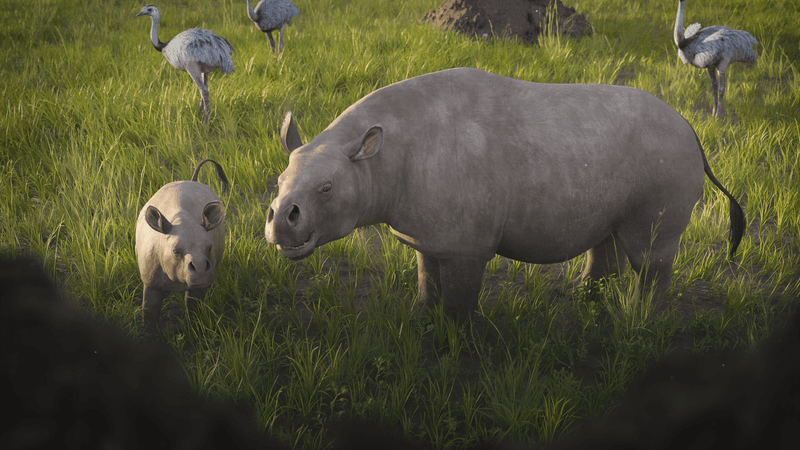
The Toxodon has left a lasting cultural impact since its discovery. It fascinated early scientists, becoming a notable specimen in Darwin’s studies during his voyage on the Beagle. Its unique features sparked debates about evolution and adaptation.
Beyond science, the Toxodon has inspired art and literature, capturing the imagination of those intrigued by prehistoric life. Its impressive size and intriguing history make it a popular subject in educational materials and documentaries.
This prehistoric giant continues to influence modern science, as researchers study its fossils to understand evolutionary processes. The Toxodon’s legacy demonstrates the enduring connection between ancient creatures and modern scientific inquiry.
9. Scientific Research And Studies
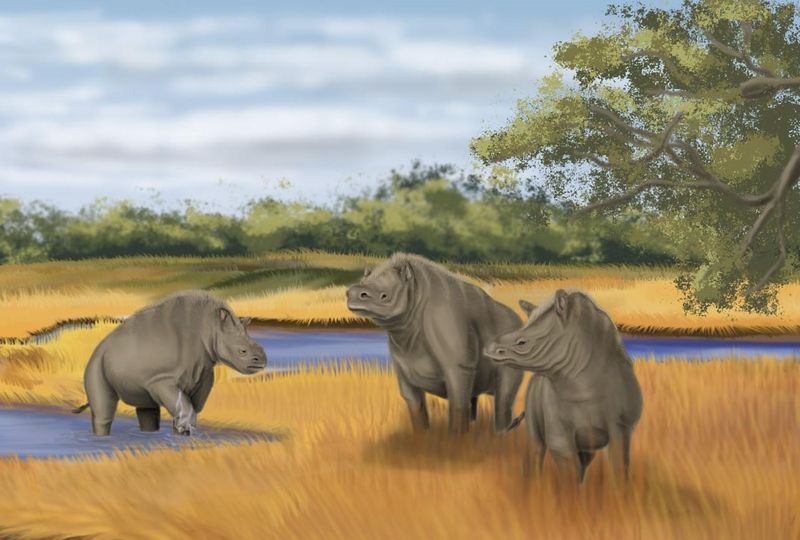
Scientific research on the Toxodon has provided valuable insights into its biology and the ecosystems it inhabited. Fossils have been meticulously analyzed to understand its anatomy, behavior, and evolutionary relationships.
Modern technology, such as CT scans and isotopic analysis, has revolutionized our understanding of the Toxodon. These techniques allow scientists to reconstruct its diet, migratory patterns, and even health conditions, painting a comprehensive picture of its life.
Research continues to uncover new aspects of the Toxodon’s existence, contributing to our broader knowledge of prehistoric life and evolutionary biology. Each discovery not only enhances our understanding of the Toxodon but also illuminates the intricate tapestry of Earth’s ancient past.
10. The Legacy Of Toxodon
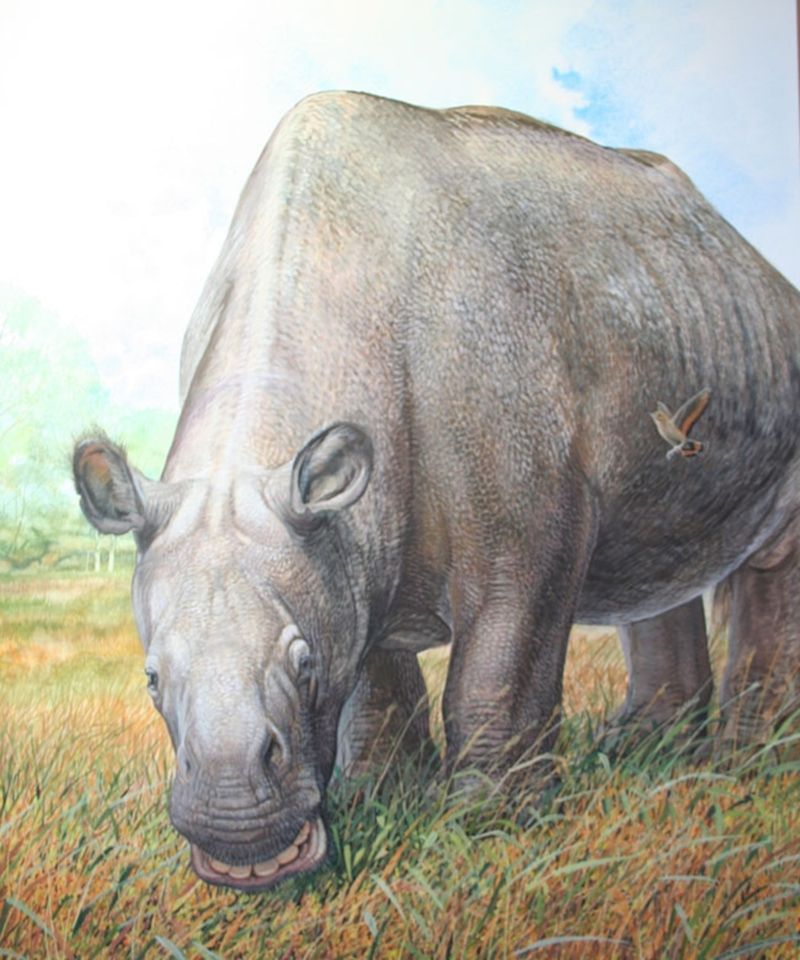
The legacy of the Toxodon extends beyond its bones. Museums around the world display its fossils, educating the public about this fascinating creature and the world it lived in. The Toxodon’s story is a testament to the richness of Earth’s history.
Through exhibits and educational programs, the Toxodon continues to captivate the imaginations of both young and old. It serves as a gateway to understanding the complex ecosystems of the past and the evolutionary stories that shaped them.
The Toxodon’s enduring legacy highlights the importance of paleontology in unraveling the mysteries of the past. As new discoveries emerge, the Toxodon remains a central figure in the narrative of prehistoric life, inspiring future generations of scientists and enthusiasts.




